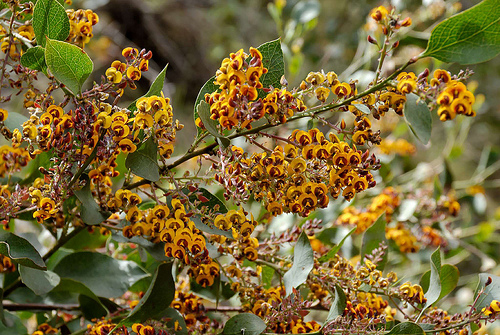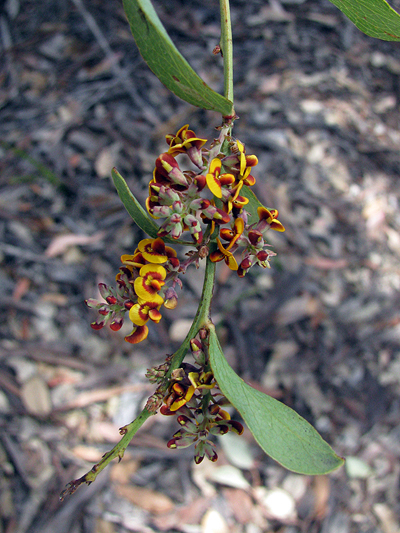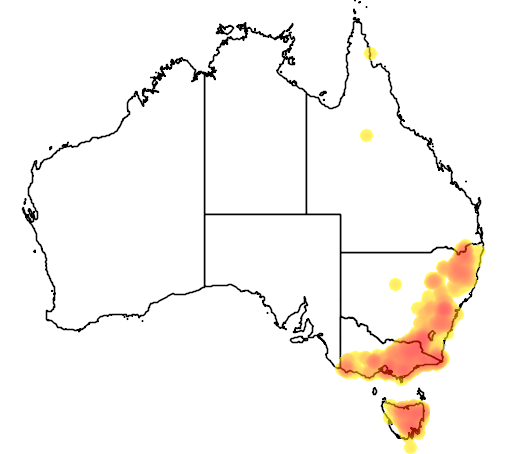Description
Common names
Hop Bitter-pea, Bitter-leaf, Broad-leaved Bitter Pea, Hop Bitter Pea.
Scientific names
Daviesia latifolia.
Family
Fabaceae.
Genus
Daviesia.
Name origin
Daviesia, after botanist the Rev. Hugh Davies (1739-1821). Latifolia, from Latin latus, broad, and folium, leaf, referring to broad "leaves".
Rainfall
500mm.
Growth rate
Fast.
Growth height
1-3m.
Presence in Australia
Quite widespread, predominantly east of the Hume Highway.
This specie has been identified in the following Australian states: Qld, NSW, ACT, Vic, Tas.
Habitat
Dry sclerophyll communities and woodland, to 1800m altitude.
Habit
Open shrub 1-3m high (rarely to 5m). Broad dull green "leaves" and many tough erect branches.
Site preference
Well-drained soil in dappled shade or partial sun. Tolerates frost and full sun.
Characteristics
Adaptable to most soils.
Flowering
Orange-yellow with dark reddish markings, Sep-Dec. Showy.
Seed collection
Early Dec to late Jan. Monitor very closely as seeds released immediately or 1-2 days after maturity. To ensure collection, cover fruiting branches with nylon stockings or paper bags after flowering. When ripe, pods light-brown and brittle and rattle when shaken, with dark-coloured seed. May be difficult to obtain seed in useful quantities. Long storage life.
Propagation
From scarified seed. Soak in near-boiling water for about 30 seconds, before cooling rapidly under flowing cold water. Alternatively soak in cold water for several hours. Dry to prevent rotting, before sowing. Germination takes 3-8 weeks. Suitable for direct seeding in pots (2-3 seeds per pot).
Regeneration
From seed or suckers, particularly after fire. Other Daviesia species establish well from direct seeding, although seed shortages may preclude this method.
Shade and shelter
Useful low-level cover in windbreaks.
Land protection
Useful understorey in recharge plantings, and for improving soil fertility, through "fixing" nitrogen.
Wildlife
Good habitat. Flowers provide pollen and excellent nectar, food for various insects and native birds.
Ornamental
Very decorative with interesting foliage and attractive perfumed flowers. Plant in clumps to form dense thickets for best effect.
Other
"Leaves" and stems produce fawn dye with alum as mordant. "Leaves" have medicinal properties and were substituted for hops. Reputedly used as drug that expels intestinal worms by European settlers. "Leaf" decoction taken to expel hydatid cysts, and also as tonic.



